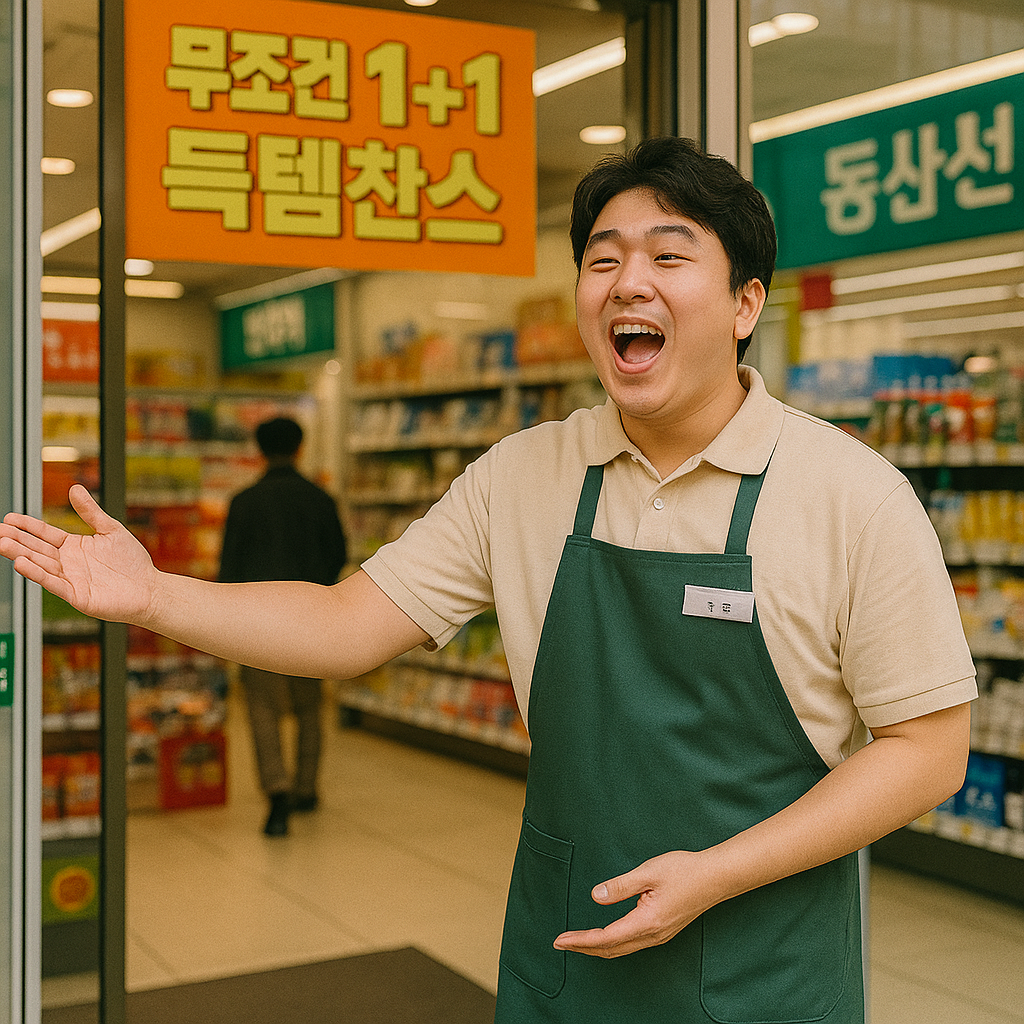Step into any Korean store and you’ll likely hear it—“어서 오십시오!” shouted with cheerful energy. For first-time visitors, it may feel intense. But for Koreans, it’s just how things are done. This booming welcome isn’t just about politeness—it’s part of a cultural system built on respect, professionalism, and hospitality.
From retail chains to neighborhood boutiques, these greetings aren’t optional—they’re expected. Understanding why reveals a lot about Korean service philosophy and social values.

What Confucianism Has to Do With Retail Greetings
Korean social behavior is deeply influenced by Confucian ideals—especially the value of visible respect. In stores, this translates to energetic greetings that make customers feel acknowledged and honored. Saying “Welcome” with enthusiasm isn’t just courteous—it’s a culturally coded show of sincerity. A loud voice implies genuine attention.
Store greetings function almost like bows in a formal introduction: it’s a mark of respect before any transaction even begins.
"Customer Is King" in Everyday Practice
One of the most common Korean business phrases is “손님이 왕이다”—“The customer is king.” Loud greetings reflect this belief by placing immediate focus on the guest. Whether someone enters to buy or just browse, they’re treated like royalty from the door.
It also helps set the service tone—friendly, fast, and ready. In a highly competitive retail environment, those first few seconds shape the entire customer experience.
Energy Builds Atmosphere—and Trust
Loud greetings do more than just welcome. They create atmosphere. Even in a quiet shop, an enthusiastic “어서 오십시오!” signals liveliness, alert staff, and customer-first service. This vocal presence helps eliminate awkwardness and invites customers to interact more comfortably.
For staff, it’s also a motivational cue—a verbal reminder to stay present and engaged throughout the shift.
Why It’s Standardized Across Stores
Most Korean retailers, especially chain stores and franchises, provide formal training on how to greet customers. This includes voice projection, posture, and facial expressions. The result is a uniform experience no matter where you shop, reinforcing trust and professionalism.
Even smaller businesses adopt similar practices to meet customer expectations set by larger brands. Over time, this consistency has become part of the everyday rhythm of Korean retail.
Conclusion: Loud, But Meaningful
What may seem loud to some ears is, to Koreans, a deeply ingrained gesture of respect and welcome. These booming greetings reflect a larger culture that values sincerity, order, and excellent customer care. Whether you’re shopping for luxury goods or convenience store snacks, those first words you hear say more than hello—they say, “You matter here.”
한국 매장에 들어서면 활기찬 "어서 오십시오!"가 먼저 들려옵니다. 처음엔 조금 놀랄 수 있지만, 한국인에게 이 인사는 일상의 일부죠. 단순한 예절을 넘어선 이 목소리는, 존중과 환대, 서비스 정신이 담긴 문화적 표현이에요.
편의점부터 백화점까지, 이 큰 인사는 선택이 아닌 기본입니다. 왜 그런지 알게 되면, 그 목소리가 더 따뜻하게 느껴질 거예요.
왜 유교 문화가 매장 인사와 연결될까?
한국은 유교의 영향을 많이 받은 나라예요. 존중은 눈에 보여야 한다는 가치가 있죠. 매장에서 큰 목소리로 손님을 맞이하는 건 바로 이 전통에서 나온 겁니다. 소리를 키운다는 건, 진심으로 환영한다는 의미예요.
이건 단순한 인사가 아니라, 거래 이전에 먼저 드리는 ‘존경의 표현’이에요.
"손님은 왕이다"는 실제로 어떻게 작동할까?
"손님이 왕이다"는 한국에서 자주 듣는 말이에요. 그 철학은 인사에서부터 시작돼요. 들어오는 모든 손님에게 우선순위를 주며, 구매 여부와 상관없이 정중히 대하는 태도죠.
매장 경쟁이 치열한 한국에서, 이 짧은 인사가 쇼핑의 전체 분위기를 결정짓는 경우도 많아요.
에너지는 분위기를 만들고 신뢰를 부른다
크고 밝은 인사는 매장에 생기를 불어넣어요. 조용한 가게라도 활기찬 인사 하나면 공간의 공기가 바뀝니다. 고객은 더 편하게 들어오고, 직원은 더 집중하게 되죠.
이건 일종의 동기부여 장치이기도 해요. 인사를 하며 ‘내가 지금 일하고 있다’는 걸 스스로 리마인드하는 거죠.
왜 모든 매장에서 같은 인사가 들릴까?
대부분의 매장, 특히 프랜차이즈나 체인점은 고객 인사를 공식 교육으로 포함해요. 목소리, 표정, 자세까지 연습하죠. 그래서 어디를 가든 비슷한 친절을 경험할 수 있는 거예요.
심지어 개인 매장도 이 흐름에 따라가요. 고객이 기대하는 기준이 이미 만들어져 있으니까요.
결론: 크지만 진심이 담긴 인사
시끄럽다고 느껴질 수 있는 인사 속엔 한국인의 진심이 담겨 있어요. 그건 단순한 "안녕하세요"가 아니라, "당신은 중요한 분입니다"라는 메시지죠. 크고 따뜻한 이 인사는, 한국에서의 쇼핑을 특별하게 만드는 문화예요.